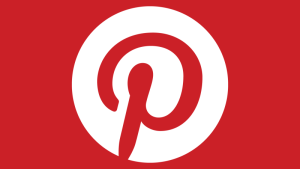 Unless you’ve been living in a cave this past week, you know that Wednesday marked the end of David Letterman’s legendary run as the host of The Late Show on CBS, closing those famous curtains for the last time after an almost unheard of (in today’s TV land, anyhow) 33 year career. I don’t know about you, but I grew up with Letterman and remember well his break out late night show on NBC. There was really nothing quite like it at the time. He paved the way for many of the current stable of talk show hosts like Jimmy Fallon and Jimmy Kimmel. In fact, we’ve included an awesome tribute to Letterman by Jimmy Kimmel at the end of this week’s post.
Unless you’ve been living in a cave this past week, you know that Wednesday marked the end of David Letterman’s legendary run as the host of The Late Show on CBS, closing those famous curtains for the last time after an almost unheard of (in today’s TV land, anyhow) 33 year career. I don’t know about you, but I grew up with Letterman and remember well his break out late night show on NBC. There was really nothing quite like it at the time. He paved the way for many of the current stable of talk show hosts like Jimmy Fallon and Jimmy Kimmel. In fact, we’ve included an awesome tribute to Letterman by Jimmy Kimmel at the end of this week’s post.
Surprisingly, the number of Facebook posts notwithstanding, David Letterman wasn’t the only news this week, so as you celebrate the Memorial Day long weekend, take a moment in the sunshine to get caught up with the latest edition of “Things You Need To Know This Week.”
Industry
Increasing Email Click Through Rates Still an Important Marketing Challenge
In a May 2015 study by Ascend2, marketing professionals surveyed ranked CTR as the most useful metric for measuring email-marketing performance. Conversion rate was cited as the second most important metric.
CTRs might have been Ascend2 respondents’ top metric, but it was also ranked as their most problematic. Respondents might want CTRs, but many aren’t getting them. In fact, 53 percent cited low click through rates as a huge challenge to email marketing success.
So, what might help? It’s pretty simple really, and something people should already be doing. Including meaningful call-to-action offers is what marketers need to focus on, along with list segmentation and message personalization.
Over-The-Top Streaming Video Services Surging

via Tech Crunch
Look out cable TV, because video streaming services are going gangbusters, and won’t be slowing down anytime soon. Juniper Research is reporting that subscriber numbers for services like Netflix and Amazon Prime Instant Video will grow from 92.1 million in 2014 to 333.2 million globally by 2019.
Streaming media devices like Amazon’s Fire TV Stick and Chromecast, as well as connected game consoles and set-top boxes that provide streaming video as pre-loaded services are driving much of this adoption, with smart TVs playing tag-team. The newer streaming media devices are making watching over-the-top services more accessible, and they not only simplify the process of getting connected, but are often sold at low price points – for example, Chromecast is $35 and the Fire TV Stick is $39. Cheap, cheap, cheap.
A number of cable companies are definitely taking note, and trying to attract potential cord cutters or those no longer interested in ridiculously bundled cable TV packages with a range of new services. Take Verizon, who recently introduced an a la carte programming package that allows buyers to choose from various “bundles” like those that features kids or sports channels – even getting it into hot water with TV providers like ESPN and Fox Sports in the process. This will an interesting battle to watch unfold. I wonder if it will be streamed…or on pay-per-view?
Digital Media
Spotify Expanding Into Videos and Podcasts
Spotify’s no slouch when it comes to staying on trend, and the streaming music company announced this week they are bringing podcasts and video to their popular music app.
Spotify’s full slate of new content partners includes: ABC, BBC, Radio Lab, Maker Stusios, ESPN, MTV and many others.
Spotify’s been facing increased competition lately, with Jay Z’s Tidal (that even with exclusive music videos and live-streaming concerts, isn’t doing so hot, and Apple’s soon to be relaunched Beats streaming music service nipping at its heels.
Stars like Taylor Swift and that cranky-pants, Jay Z, have already pulled their tunes from Spotify, and many musicians are getting on the “no more free streaming” bandwagon. This week’s announcement indicates Spotify’s getting the message, and knows it can’t afford to stand still for much longer.
Size is Important When it Come to Video Ad Viewability

via eMarketer
Well, well. It appears that size does matter. According to April 2015 research by Google, larger ad sizes could help boost video viewability – kind of a big deal, as most marketers face poor viewing numbers on their video ads.
The study looked at video ads by DoubleClick and Google Display Network worldwide and found that the larger the ad, the more views were accrued. If you want to get technical, “848×477 units ranked second for volume behind 300×250 placements, but the former hammered the latter when it came to viewability, with respective rates of 88.6 percent versus 19.8 percent.”
Of course, as we all know, size isn’t the only thing that matters. Not surprisingly, real-estate played a major role in viewability numbers also, with ads with the highest viewer rates being located at the top and in the center of the page. Location, location, location pretty much always rings true, no matter the venue.
Millennials
Millennials Turn to Mobile for Travel Research
According to recent research by Yahoo, Millennials aren’t only travelling, but they rely their smartphones and tablets when doing their travel research. Smartphones were the winning technology though, certainly among those loyal to only one mobile device, with phones pulling ahead of tablets with a healthy 62 percent compared to 46.
As for bookings, while Millennials tended to head to the desktop to book their trips, another study, in February 2015 by Harris Interactive for Switchfly, found that 66 percent of U.S. smartphone owners ages 18 to 34 said they would book travel via mobile devices, the highest response. In comparison, the overall average across all age groups was 52 percent.
The lesson for travel related companies? Get on board with providing a consistent experience across screens to allow for seamless research and booking.
Mobile
Consumers Prefer Mobile Browser Over Dedicated Apps For Local Info

via Search Engine Land
According to a new consumer survey from SEO firm BrightLocal, expectations of mobile optimized websites, even for local business owners, have grown significantly since 2013. Local search apps aside, it appears that tech savvy consumers now want to find what they want, when they want it, via mobile search.
Accordingly these respondents expressed a greater inclination to contact local businesses with mobile optimized sites. And they can’t be crappy, outdated sites, either. Bad local site experiences or missing local business information will turn users away.
Hootsuite Introduces New Streamlined Facebook Ad Tool
Hootsuite is opening up the playing floor with the addition of its new Facebook ad tool. When they launched their Twitter ad tool, they limited it only to enterprise level users, but this new Facebook tool can be accessed by their entire user base.
According to a recent Venture beat piece, VP of new product development Greg Gunn has said, “(The) existing Twitter tool for enterprise users has more choices, options, and control, and requires a more sophisticated user. But this stripped-down approach will be the model moving forward.
Positioning its latest innovation as “the first ad solution for human beings,” the company is trying to reach the approximately 75 percent of its user base that has never promoted on Facebook. We like this idea and are definitely going to check it out for some of our small to midsize business clients.
Twitter Partners With Google in New Tweet Search Deal
Looking for a particular Tweet? LMGTFY. Yes, in its latest move to increase visibility (as well as to remain viable), Twitter has unveiled a partnership with Google, allowing American users to see searched tweets when using the Google app or the mobile Web. A desktop version is not far behind, and it’s reported that they are also looking to take searchable tweets international soon.
According to the Twitter post explaining the integration, “users who search for Taylor Swift will see her most recent tweets included in Google search results, while a search for #MadMen will bring up relevant news and tweets about the series finale. Search results include tweets with images and video. Users can tap on a tweet in Google search results to be taken directly to Twitter.”
Looking to simplify the social platform for new users, and also to placate grumbling investors unhappy with Twitter’s current rate of new user growth, as well as signs that user engagement may be leveling off, this new partnership follows up on another recent makeover, which included a home page that shows top trending content in different news categories and more tailored suggestions for who to follow on Twitter.
Pinterest Launches Cinematic Pins

via Marketing Land
If you just can’t get enough of Pinterest, you’re in for a treat this week. “Cinematic Pins” are coming to a Pinterest stream near you, this summer. What are Cinematic Pins? Basically—advertisements. Moving Pinterest advertisements. But, apparently, and according to the company, they won’t be annoying because you, dear Pinterest user, control the motion!
Color me dubious, but based on what Tim Kendall, Pinterest’s general manager for monetization told MarketingLand, “What’s really unique about this is that it keeps the user in control. We believe that autoplay as it exists today is interruptive and annoying. What we believe we have achieved with Cinematic Pins is a way to delight the user, let them stay in control of motion while also allowing the brand to tell their story.” We’ll see about that.
That said, it’s cool that this user control is achieved via scrolling on mobile devices. In fact, the ads won’t even appear for desktop users, which makes sense since more than 80 percent of Pinterest activity takes place on mobile. Debra Aho Williamson, principal analyst with eMarketer, weighed in, saying her concern, uniqueness aside, is whether this new feature will have legs.
“The format is definitely eye-catching and it will grab Pinterest users’ attention,” Williamson said in an email. “But I can see where the novelty might wear off after a while. The interesting part is that the ads start and stop moving based on the user’s scrolling behavior. This gives the user some sense of control over the ad experience.”
Launch partners at this point include Banana Republic, Gap, L’Oreal, Nestle, Old Navy, Target, Unilever, Visa, Walgreens, and Wendy’s.
Miscellaneous
Jimmy Kimmel Bids Farewell to David Letterman
Maya Rudolph Parodies National Anthem at Tulane Commencement
photo credit: Instagram and other Social Media Apps via photopin (license)

